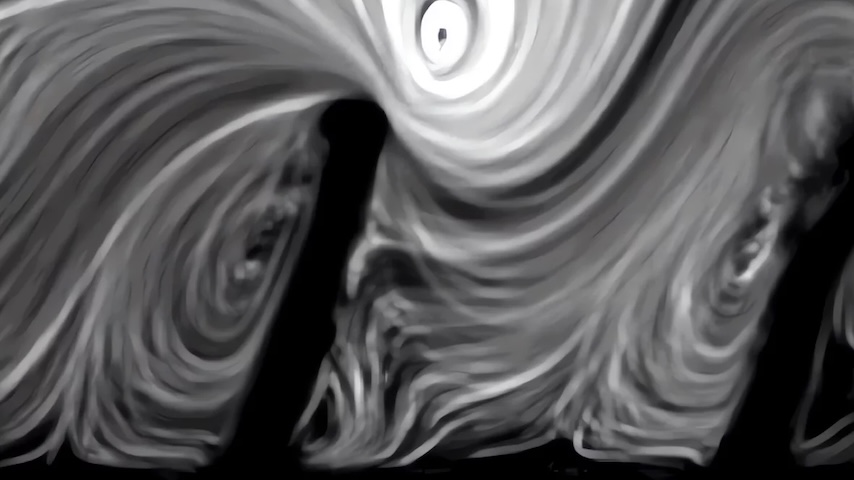Cleansing Waves
Cleansing Waves


Researchers have found a new way to clean ureteral stents and catheters through a combination of “robocilia” and ultrasound.
Each year, surgeons across the globe implant more than one million ureteral stents to bypass blockages in the ureter, the tube that connects the kidneys to the bladder. Doing so allows urine to drain properly, helping to avoid potential kidney damage. Unfortunately, more than 80 percent of those stents will ultimately fail, often due to the formation of infectious crystalline biofilms, a process called encrustation, which will lead to blockages. These failures are not just painful for patients, but they also increase the financial burdens on an already stretched thin healthcare system.
“The urinary tract is warm and wet so it’s the perfect environment for bacteria,” said Francisco Clavica, a researcher at the ARTORG Center for Biomedical Engineering Research at Switzerland’s University of Bern. “The bacteria build up, obstruct the stent, and then the stent needs to be replaced.”
Clavica has been working on new stent technologies for a decade. And while advancements in materials and designs have helped offer short-term improvements to encrustation problems, most ureteral stents will still need to be replaced as often as every two to six months.
“This made me realize that you need some kind of active actuation to stop the biofilms from building up,” he explained. “That’s why I contacted Daniel Ahmed.”
Ahmed, an assistant professor who specializes in acoustic robotics for life sciences and healthcare at ETH Zurich, had published a 2023 paper in Nature Communications featuring ultrasound-activated microbots to help clear blockages in the brain vasculature. When Clavica explained encrustation issues with ureteral stents, the two thought they might be able to harness ultrasound activation to clean the bacterial biofilms so stents don’t have to be replaced as often.
More Ultrasound Tech: Wearable Patch Reads Muscle Activity Remotely
Most people are familiar with ultrasound as an imaging modality. A transducer produces high frequency sound waves that bounce off different parts of the body. When the waves echo back to a receiver, you can generate electrical signals to visualize organs or other tissues. Those sound waves, however, can be used in a different way. By using ultrasound to activate “robocilia,” or manmade cilia on a stent, a process called acoustic streaming could help loosen encrustation in a non-invasive manner.
“We were inspired by the starfish larvae, which have ciliary bands that oscillate to create vortices that can propel the starfish, and also help it collect food,” Ahmed said. “We used this same concept in a stent. We envision these robocilia on the walls of the stent. The ultrasound waves cause oscillation of the cilia, which can break up the biofilm and clean it off very rapidly.”
Clavica, Ahmed, and colleagues performed two-dimensional microfluid experiments to test this idea. They discovered the addition of ultrasound-activated cilia on both the inner and outer walls of the stents could successfully remove crusts and biofilms quite rapidly.
“The ultrasound basically focuses on the cilia and gets them oscillating. The resulting vibrations help the cilia on the stent create vortices and the sheer stress produced by those vortices can break up the bacteria so they can be washed away,” Ahmed continued.
Solid deposits could be cleaned in just a few seconds during their experiments, Clavica added.
Discover the Benefits of ASME Membership
“The biofilm takes a bit longer because it’s a bit slimy and gel-like,” he explained. “But we could still clean it in less than a minute, which is very good.”
With the success of these experiments, Clavia and Ahmed plan to produce a physical prototype of this new ultrasound-activated cleaning stent. They’ll be guided by further experiments they’ve done with designs involving 3-D “carpets of cilia” on stent and catheter devices.
“We are excited to produce the prototype and then test it in pigs,” Clavica said. “And while we refer in this study to the application of ultrasound cleaning for ureteral catheters and stents, we know that other types of stents are affected by the same problem. Everything we implant in the body can develop a biofilm or even dirt. Our technology can then be applied to keep them clean.”
Both patient and physician comfort with ultrasound as a medical technology can help inspire adoption of this sort of design, Ahmed added. People are already comfortable with ultrasound imaging—which can be found in most doctor’s offices—so they should be more open to its use in novel applications.
“Ultrasound is widely used as an imaging modality and for other medical applications. People know it and are used to it,” he explained. “My lab has been developing microrobots using ultrasound for quite some time. We see that there are a lot of potential applications we could potentially target in the future. We can use ultrasound-activated microrobots to clean the biofilms in these stents, as we showed in this study. But we could also use these kinds of microrobotic cilia to break a thrombus, or blood clot, in the heart—or even in the brain. I think the potential applications, as well as the impact, are huge. It’s just a matter of using our imaginations to take it to the next level.”
Kayt Sukel is a technology writer and author in Houston.





